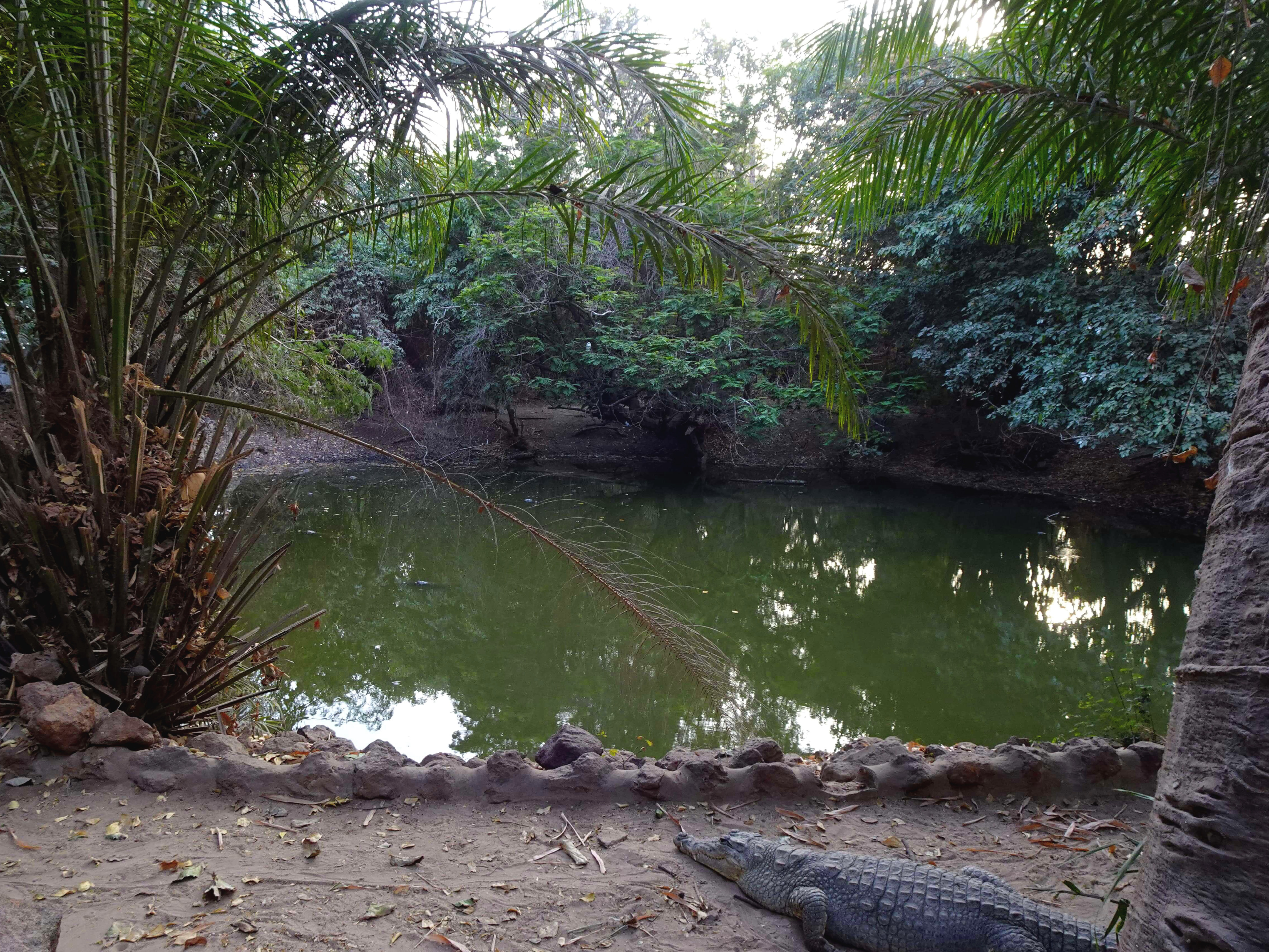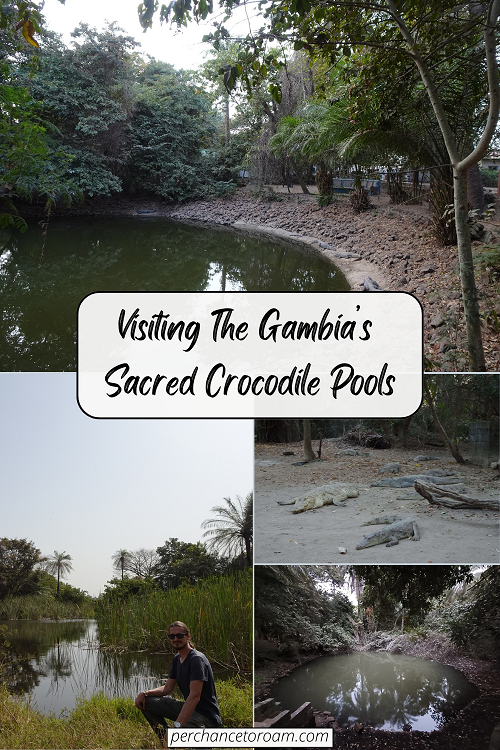The Gambia’s three sacred crocodile pools are one of the more unusual attractions I came across on my recent trip through the country. While at least one of them sees a fair number of visitors, they’re not tourist attractions in the classic sense and are still actively used by locals for animist rituals.
Kachikally is the pool that seems to be on the itinerary of every visitor to the country, while the more remote Folonko and Berending Pools felt a lot more authentic to me. I visited all three pools on my trip through The Gambia. Here’s what I learned.
This post may contain affiliate links, and I might earn a small commission at no additional cost to you. For more info, click here.
What’s the Deal With Crocodile Pools in The Gambia?
Long before Islam became the dominant religion in The Gambia, local people practiced animist traditions – many of which still quietly persist today. These crocodile pools are part of that older belief system and local people come here for blessings, especially women who are struggling with infertility.
Water from the pools is believed to have spiritual power, and in some cases, the crocodiles themselves are thought to be connected to the ancestors. So even though especially Kachikally Pool now seems mainly aimed at tourists, it’s still a place that’s revered by many Gambians.
This also means that it is important to behave respectfully while visiting. For instance, you’ll have to take off your shoes at Folonko Crocodile Pool.
Visiting The Gambia’s Sacred Crocodile Pools
Kachikally Crocodile Pool in Bakau
Kachikally is the closest pool to the resort area around Kololi, which means that it’s very easy to reach but also sees a lot of visitors, so it’s probably best to come here early in the morning or late in the evening. I dropped by around 6pm and had the place almost to myself.
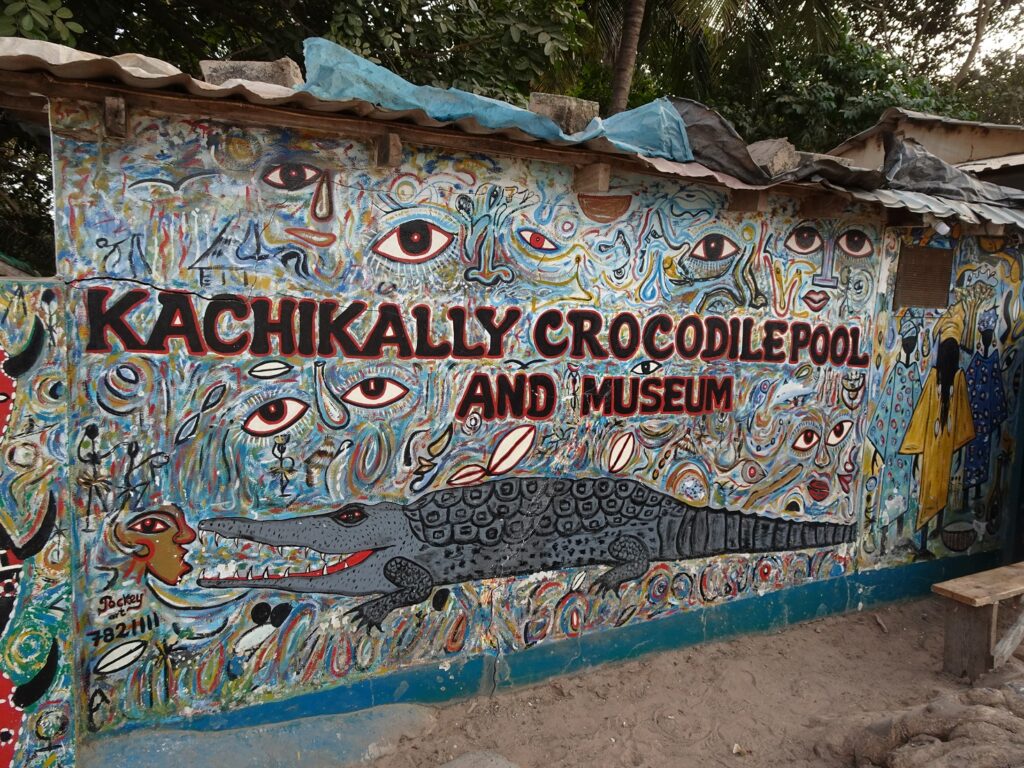
Still, you should plan at least 30 to 45 minutes to visit the place, as it also includes a cultural museum and small nature trail. The museum focuses on The Gambia’s colonial and post-colonial history as well as local traditions, like the Kankurrang (initiation rite ceremonies).
There are some cool masks and musical instruments on display, but you can see better examples of those at the National Museum in Banjul. What I found most interesting at the Kachikally museum, were the different jujus (religious talismans), including a dried monkey paw straight out of a Twilight Zone Episode.
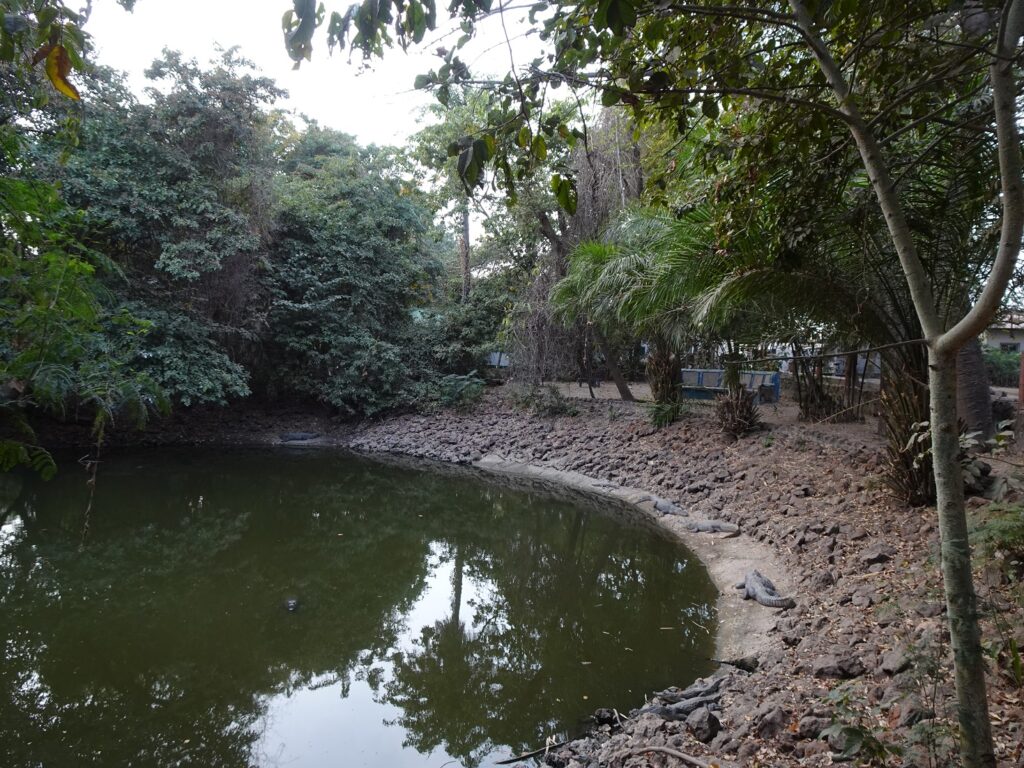
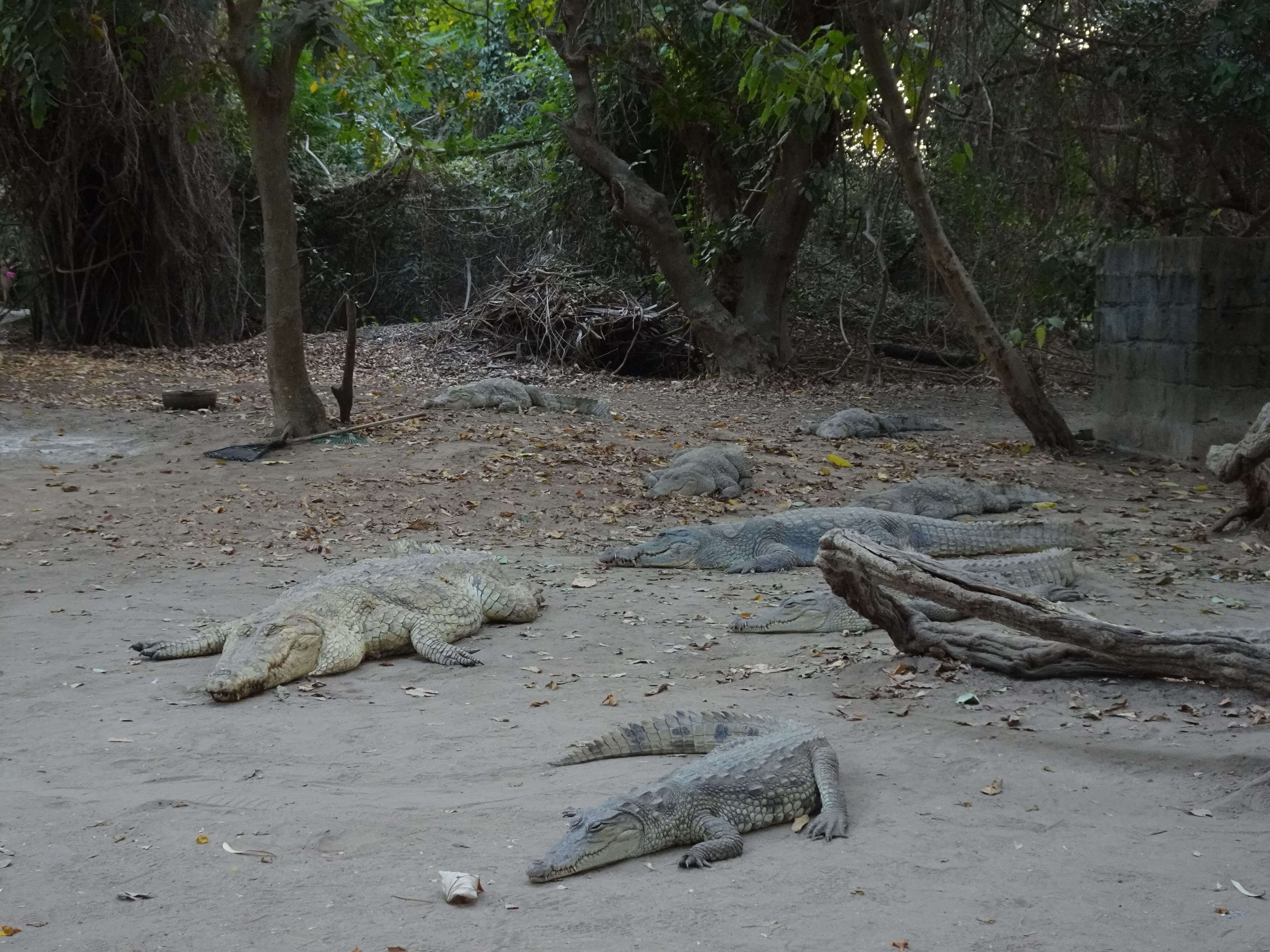

Behind the museum, a 5-minute nature trail leads through a small section of forest and past a huge silk cotton tree to the pool. Different from the other two pools, you are 100% guaranteed to see some crocodiles at Kachikally.
Moreover, this is probably one of the few places in the world, where you can actually touch a crocodile and leave with all your limbs still attached. There will be a bunch of guides hanging around the pool who’ll point out which of the crocodiles are tame enough to pet and who’ll snap a picture of you if you’re there on your own, like I was.
How to Get There
The Pool is located at the southern edge of Bakau town. You can walk there by going straight south from the roundabout at the intersection of Atlantic Boulevard and the Old Cape Road at the eastern end of Bakau’s craft market.

Top 3 Hotels in Bakau
Budget: Leybato Beach Hotel
Midrange: Pelican Residence
Luxury: Majula Boutique Hotel (pictured)
.
.
To get to Bakau from the Kololi area or anywhere else on the coast, you’ll just have to stand by the Bertil Harding Highway and wave down any gelly-gelly or bush taxi going east. They’ll either go directly to Bakau or can drop you at the roundabout at the northern end of Kairaba Avenue in Fajara (the one known as ‘traffic light’), from where you can get another gelly-gelly to Bakau. Either trip shouldn’t be more than 20 dalasi.
If you don’t like to use the public transport, you can also get a yellow tourist taxi (or tell any available bush taxi driver that you want to take a ‘town trip’), but you’ll have to haggle hard, as these don’t have fixed rates. Finally, there are also guided tours available. Look below for some options.
Entrance Fee: The entrance fee to the pool is 100 Dalasi.
Opening Times: The pool is open from 8am to Sundown.
Folonko Crocodile Pool in Kartong
Folonko Crocodile Pool can be found in the pretty village Kartong near the southern border with Senegal and has a completely different vibe from Kachikally. The crocodiles aren’t fed here, which means that they’ll roam around the whole area, so sightings are rarer.
I actually managed to spot a single crocodile in the pool, and when I pointed it out to a local I met there, he was quite surprised. As opposed to Kachikally, the pool isn’t touted as a tourist attraction and there are more Gambians coming here for fertility rites (there’s even a row of stalls where women can shower themselves with the pond’s water).
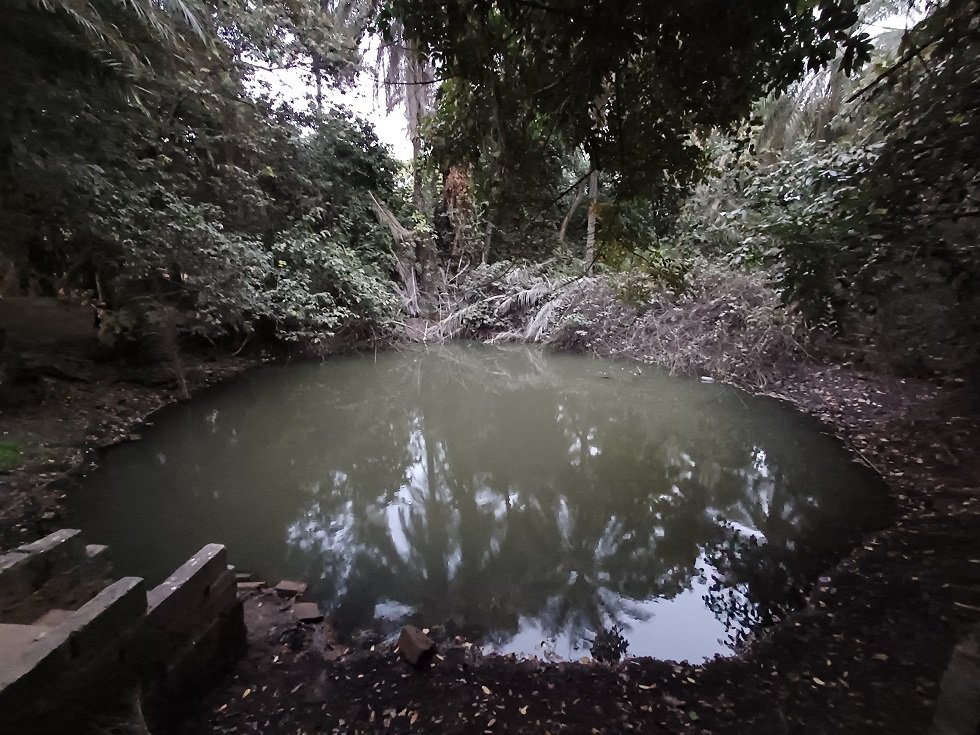
As this is considered a holy site, be respectful and make sure to take off your shoes before entering the compound. The murky pool itself isn’t much to look at, but it has a nice location somwhat close to the sea and a visit can easily be combined with other sights in the area.
In general, I’d say it’s worth staying in Kartong for a day or two. There’s a nice, laid-back atmosphere and some interesting sights, like the cool little Lemonfish Art Gallery or the Kartong Reptilian Farm a little further north off the road to Gunjur.
How to Get There
The easiest way to get to Kartong is to take a gelly-gelly to Gunjur from Serekunda’s Dippa Garage Taxi Park (35 Dalasi) and then change to a bush taxi to Kartong (20 Dalasi). The whole trip took me about 1.5 hours.
Once in Kartong, you’ll have to follow the small side road opposite St. Martin’s school in the centre of town. Anyone in Kartong can point you in the right direction.
Entrance Fee: There’s no entrance fee, but if a caretaker is around, you might want to consider a donation (50 dalasi should be enough).
Opening Times: The pool is open during daylight hours.
Berending Crocodile Pool
Berending is the least visited of the three Crocodile Pools, which I found to be part of its appeal. It’s just a nice pond in the middle of nowhere, surrounded by tropical vegetation. I didn’t spot any crocodiles here, but I wasn’t too sad about it, as there was nobody around when I visited, and I didn’t fancy running into one on my own 😅.
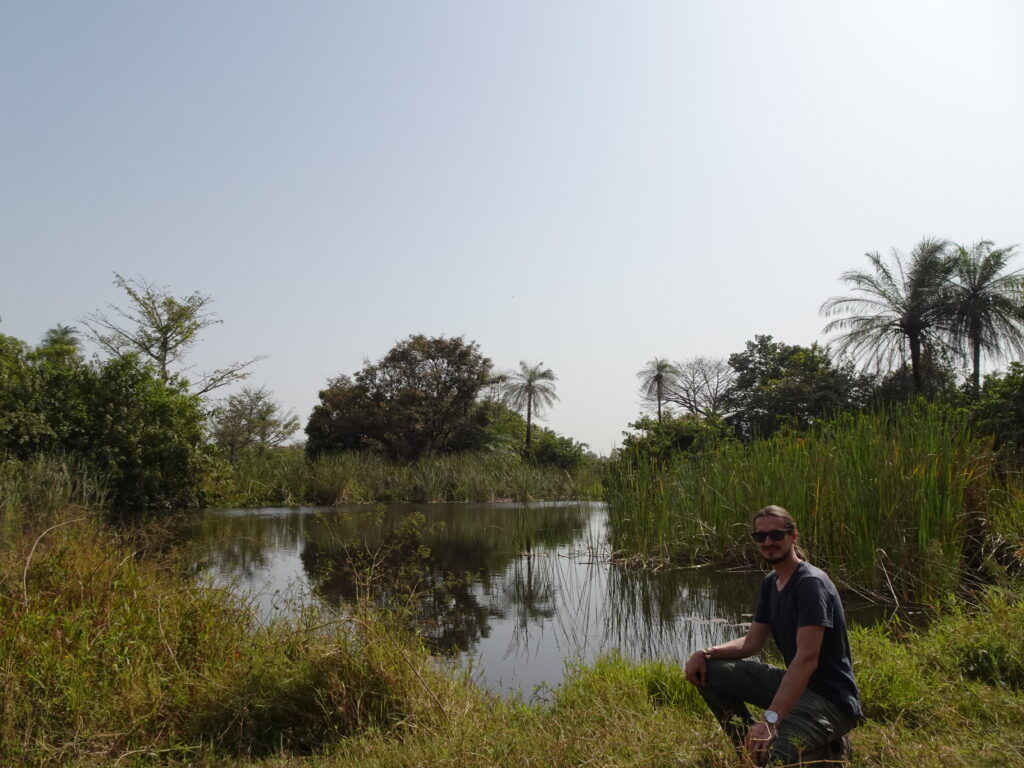
What I did see were plenty of birds flitting around, as well as some sun squirrels up in the trees. On my way back to the road, I had a chat with two brothers who were building a set of huts in a nearby compound and planned on converting them into AirBNBs, so there might be the tiniest bit of tourist infrastructure in the future.
Unless you have a lot of time, I’d say Berending isn’t really worth the detour on its own, but a visit can easily be combined with a trip to the UNESCO-listed historical slavery sites in Juffureh and Albreda further south.
How to Get There
To get to Berending Crocodile Pool, you’ll first have to make your way to the north bank of the River Gambia by using the Banjul-Barra ferry. From Barra, you can take any gelly-gelly or bush taxi going to Albreda and ask them to drop you off at the intersection in Buniadu village.
From there, it’s a 1km walk east to Berending village. To get to the pool, you’ll have to follow a sandy track south from the western edge of the village (right next to the huge silk cotton tree).
If you’re already in the area to visit the historical sites around Kunta Kinteh Island, Berending makes for an interesting (and slightly eerie) side trip.
Entrance Fee and Opening Times: There’s no entrance fee and no opening times.
See Also
How to Backpack The Gambia on a Budget
The Perfect One- and Two-Week-Itineraries for The Gambia
